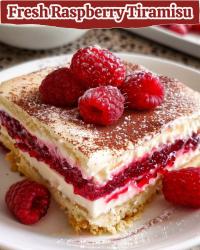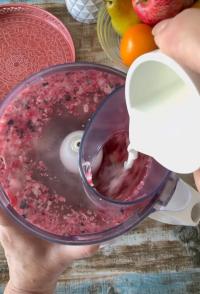Copy Link
Add to Bookmark
Report
HOMEBREW Digest #0288

HOMEBREW Digest #288 Fri 27 October 1989
FORUM ON BEER, HOMEBREWING, AND RELATED ISSUES
Rob Gardner, Digest Coordinator
Contents:
Re: Glue for label (Mike Zentner)
Low Specific Gravity Readings (John DeCarlo)
Oxidation and Wort Cooling (John DeCarlo)
headspace (Pete Soper)
Foaming during bottling (Pete Soper)
Foaming during bottling (Pete Soper)
Sorry to broadcast this, but (Doug Roberts @ Los Alamos National Laboratory)
Coffee Stout, Specific Gravity
Chocolate Point Porter (Doug Roberts @ Los Alamos National Laboratory)
Re: Homebrew Digest #287 (October 26, 1989) (CCL-F) <ggibson@PICA.ARMY.MIL>
Stuck fermentation! Help! (Marty Albini)
re: shook beer (John S. Watson)
The ``Golden Beer'' State: Part 4: Southern California (David L. Kensiski )
secondary fermenters (iwtio!korz)
oxidation (iwtio!korz)
Results of GABF (H.David Scarbro x6608)
New guy on the block. Looking for fun... (jamesb)
All Shook Up (willa)
Gelatin and Extended Fermentation (John D. Polstra)
Send submissions to homebrew%hpfcmr@hplabs.hp.com
Send requests to homebrew-request%hpfcmr@hplabs.hp.com
----------------------------------------------------------------------
Date: Wed, 25 Oct 89 10:35:02 -0500
From: hpfcla!hpcea!hplabs!rutgers!ee.ecn.purdue.edu!zentner (Mike Zentner)
Subject: Re: Glue for label
It might not be the cheapest solution to the problem, but a few years
ago, I designed a label for bottles I was giving away to friends which
I intended to tape onto the bottle. My wife snuck it away from me and
took it to a local print shop where she had them put it on "sticker
paper" with peel away backs and gave these to me as a present. They
work very well, but probably wouldn't be very easy to remove if I were
re-using these bottles.
Mike Zentner zentner@cn.ecn.purdue.edu
------------------------------
Date: Thursday, 26 Oct 1989 09:17:35 EST
From: m14051@mwvm.mitre.org (John DeCarlo)
Subject: Low Specific Gravity Readings
To John S. Watson:
On the specific gravity readings you are getting. Miller recommends
calibrating your hydrometer when you get it (and at regular intervals
thereafter I wonder?).
Just put the hydrometer in plain water at 60 degrees F and see what
the reading is (it should be eactly 1.000). Miller says that you
should just add/subtract the difference you see here from all your
other 60 degree readings to get the real SG.
It may be that hydrometers are like ovens, often off by some value
that you have to compensate for when measuring.
John "Trying to learn while still relaxing" DeCarlo
ARPANET: M14051@mwvm.mitre.org (or M14051%mwvm@mitre.arpa)
Usenet: @...@!uunet!hadron!blkcat!109!131!John_Decarlo
Fidonet: 1:109/131
------------------------------
Date: Thursday, 26 Oct 1989 09:16:44 EST
From: m14051@mwvm.mitre.org (John DeCarlo)
Subject: Oxidation and Wort Cooling
>From: Dave Sheehy <dbs@hprnd>
>Whoa! Wait a minute here. According to Miller oxidation is a problem
>with hot wort. Yes, you want to oxygenate the wort before it's pitched
>but only after it's been cooled so that oxidation is not a problem. In
>fact, that's one of the reason's for using a wort chiller (as well as
>getting a good cold break). If the wort is allowed to cool slowly then
>it will subject to more oxidation according to Miller.
Hmmm, it was my impression on reading Miller (have to go back and check)
that the major problem with a slow cooling of the wort was twofold:
1) More time for wild yeasts, bacteria, and other nasties to get at the
wort before the yeast is pitched.
2) Not much of a cold break.
(Anyway, that's what my notebook says, my copy of Miller is currently
lent to someone.)
>While we're on the subject of oxidation, I'd like to discuss Miller's
>contention that the typical 1 - 2" headspace in a bottle of beer has
>enough oxygen present to cause significant oxidation. Miller recommends
>using a 1/8" headspace to prevent this. I'm not sure I believe him or
>not. I remember some discussion a few months ago about headspace. Has
>anybody experimented with a smaller headspace and if so did you notice
>any differences one way or the other?
Actually, I have a question on this. How do you measure headspace?
>From the very top of the bottle? From the bottom of the lip? I don't
know if I am measuring the same as anyone else, but I am trying to
keep the level above the smooth part of the bottle and into the curved
top area. Although I haven't been completely successful, and the beers
have all turned out roughly the same. (Now I go back and level off
the ones that seem too low.)
John "And what about this automatic bottle filler stuff I have heard
about? I'm semi-tired of spilling good beer on the floor :-)" DeCarlo
ARPANET: M14051@mwvm.mitre.org (or M14051%mwvm@mitre.arpa)
Usenet: @...@!uunet!hadron!blkcat!109!131!John_Decarlo
Fidonet: 1:109/131
------------------------------
Date: Thu, 26 Oct 89 10:18:56 EDT
From: Pete Soper <soper@maxzilla.encore.com>
Subject: headspace
Unless you know what you are doing, do not try to use 1/8 inch
of headspace. The reason is that thermal expansion can cause the
1/8 to turn to zero and the expanding beer will eventually break
the bottle. You would think the cap would be pushed off, but it
never is - the glass is the weak link. I have purposely tried
extremely small amounts of headspace and can vouch for the
tradeoffs.
For instance, bottling your beer while it is cold, then having
the bottles warm up to room temperature can cause significant
expansion and you must take this into account. Likewise, bottling
near room temperature but letting the bottles get into a hot
environment may also bring expansion into the picture and cause
problems.
I've settled on a starting value of 1/2 inch for headspace to
leave myself some margin for error.
As for the advantages of reduced headspace, here are the ones
I've observed:
1. There is more beer in the bottle.
2. The beer stays fresh longer.
3. If a bottle does turn out to have a flaw and it breaks, it just
cracks and drains. There is no explosion.
Speaking of bottling, sometimes you can arrange for the headspace
to be filled with foam when the bottle is filled and thus start out
with mostly C02 instead of air in the headspace. This is harder to
pull off with larger headspaces.
--Pete Soper
------------------------------
Date: Thu, 26 Oct 89 10:19:43 EDT
From: Pete Soper <soper@maxzilla.encore.com>
Subject: Foaming during bottling
Long ago I used to bottle by siphoning. What a pain in the ass.
------------------------------
Date: Thu, 26 Oct 89 10:39:28 EDT
From: Pete Soper <soper@maxzilla.encore.com>
Subject: Foaming during bottling
(oops - sorry about that rude truncated message. Here is
the whole thing)
Long ago I used to bottle using a siphon. What a pain in the
ass. I've used gravity (i.e. a plastic "bottling bucket" with
a drum tap) for the past year or so and will never consider
siphons for this again.
Here is the problem: Siphons operate with partial vacuums.
Beer with lots of dissolved C02, especially at warm temperatures
where it can just barely hold that C02, HATES VACUUMS. The
reduced pressure in the siphon hose causes the C02 to literally
boil out, leading to all the hassles that Dave Sheehy
(dbs@hprnd.hp.com) described in HBD #287.
If you cannot avoid the use of a siphon, cool the beer prior to
bottling. This will allow more of the C02 to stay in solution.
(Actually, cooling the beer has a lot of other really nice effects
as Rob Gardner pointed out around a year ago but that's another
subject). Also, I've found that the slightest leak in the connection
between the siphon hose and racking tube (if you use one) can cause
fractional tons of *air* to get into the siphon. A hose clamp
can fix this.
What I use these days is just a straight rigid plastic tube stuck
on a drum tap spigot (with a very short length of vinyl tubing). I
put the rigid tube in the bottom of the bottle, turn the tap and
then move the bottle down as it fills, closing the tap when it
is at just the right level.
--Pete Soper
------------------------------
Date: Thu, 26 Oct 89 09:00:53 MDT
From: roberts%studguppy@LANL.GOV (Doug Roberts @ Los Alamos National Laboratory)
Subject: Sorry to broadcast this, but
My mailer couldn't find Tom Hotchkiss's return address.
Subject: Coffee Stout, Specific Gravity
Funny you should ask: I tasted it just last night. The recipe is
included at the end of this message. First: it tasted good. However,
when I make it again, I'll use a little more chocolate & black patent:
it didn't come out as dark as I would have liked. The 1/2 # of
unground Sumatra coffee beans was about right.
I just dumped the beans, unground, into the hot wort in the primary. I
used to have a stoneware crock that I used as a primary, but it got
cracked, so I now use a standard food-grade 7 gallon plastic bucket
with a lid and air lock. The beans floated at first, but by the next
morning they had sunk to the bottom, so I left them there for 2 1/2
days in the primary before racking to a glass carboy secondary.
Also, since I was not worrying and having a homebrew(s) I forgot to
take the initial SG....
Have fun.
--Doug
-------------------------------------------------------------------
To: homebrew%hpfcmr@hplabs.hp.com
Date: Sun, 1 Oct 89 21:55:16 MDT
From: roberts%studguppy@LANL.GOV (Doug Roberts @ Los Alamos National Laboratory)
Subject: Chocolate Point Porter
A few years ago I went to a local brewer's club tasting, and sampled a
porter that had included coffee as an adjunct. It was pretty good, so
today I brewed a batch of my own. It's called Chocolate Point Porter
in honor of:
a. My three dark-faced Siamese who insist on "helping" me any time I
try to make beer, and
b. The pound of chocolate malted barley in the recipe.
The recipe, for those interested:
7# light, unhopped extract syrup
1# chocolate, not cracked
1/2# black patent, not cracked
1/2# crystal (90)
1/2# Sumatra Swiss Water Process Decaff whole beans (at $7 per pound
not an ingredient to be taken lightly)
1 1/2 oz Cascades - boiling
1/2 oz Cascades - finish
To make: place the chocolate, patent, & crystal in about 2 gallons and
bring almost to a boil, then sparge into the boiling pot. Add 2 more
gallons water, bring to boil and add the bittering hops. At 30 minutes
add 1/2 tsp Irish moss. Boil for an hour, adding the finishing hops
during the last 2 minutes. Pour into the primary and add the coffee.
If the beans are still floating in the morning, I'll scoop them out
with a colander. Otherwise, I'll just rehydrate my good Whitbread dry
yeast & pitch it, coffee and all.
--Doug
================================================================
Douglas Roberts |
Los Alamos National Laboratory |When choosing between two evils,
Box 1663, MS F-602 |I always like to try the one
Los Alamos, New Mexico 87545 |I've never tried before.
(505)667-4569 |
dzzr@lanl.gov |
================================================================
------------------------------
Date: Thu, 26 Oct 89 10:54:07 EDT
From: Gregg Gibson (CCL-F) <ggibson@PICA.ARMY.MIL>
Subject: Re: Homebrew Digest #287 (October 26, 1989)
To anyone who would like to be of assistance. I am very new to
the field of homebrewing, but at the same time extremely interested.
I need some guidance as to where to start learning the art of brewing.
If anyone could spare a few minutes to write a message about some good
literature or any thing that could guide me down the right path I would
appreciate it.
------------------------------
Date: Thu, 26 Oct 89 9:01:36 PDT
From: Marty Albini <martya@hpsdl39>
Subject: Stuck fermentation! Help!
Sunday,10/15 I made a batch of Doug Roberts' Mackeson clone
stout (BTW, what do you call that? Most recipes have a cute name). I
got a slightly higher OG (1.060 instead of 1.058) mostly, I think, due
to using a pound of dry malt to substitute for one pound of extract. I
also steeped the grains instead of adding them to the boil, so I might
have pick up some extra unfermentables.
At any rate, I rehydrated a package of Edme yeast in room
temperature water and pitched into ~78F wort. The yeast foamed up
nicely and smelled fine. Then the funny stuff happened.
I set it in my usual place (under my house) and checked the
next day: no bubbles in the lock. Checked next day: still no bubbles.
Worried, I unwrapped the sheet I use to keep light out and found 1/2"
of krausen on top. I checked for leaks which might have let the CO2
out around the lock, found none, decided to relax and have a homebrew.
The Krausen fell soon after, still no bubbles. I moved it to a
warmer location: no bubbles. Checked the gravity: 1.030. So some
fermentation had taken place, and the beer had some dissolved CO2 in
it. Checked the gravity last nite (three days later): it hadn't
changed, and the beer was flat. Desperate, I rehydrated more yeast and
repitched.
What is going on? I had heard good things about Edme yeast.
It's supposed to be fairly attenuative and generally good quality. Has
anybody noticed it behaving flakily before? And why didn't I see any
bubbles in my fermentation lock? Two days after pitching I'd expect to
see a bubble a second or so.
All along the wort has tasted fine, no bacteria sourness or
unusual off flavors. It has promise of being excellent stout (thanks,
Doug!), so I really want it to turn out well.
Help!
--
________________________________________________Marty Albini___________
"To enjoy the flavor of life, take big bites. Moderation is for monks."
phone : (619) 592-4177
UUCP : {hplabs|nosc|hpfcla|ucsd}!hp-sdd!martya
Internet : martya%hp-sdd@hp-sde.sde.hp.com (or @nosc.mil, @ucsd.edu)
CSNET : martya%hp-sdd@hplabs.csnet
US mail : Hewlett-Packard Co., 16399 W. Bernardo Drive, San Diego CA 92127-1899 USA
------------------------------
Date: Thu, 26 Oct 89 10:09:46 -0700
From: John S. Watson <watson@ames.arc.nasa.gov>
Subject: re: shook beer
Hi Folks,
First of all, I want to thank you all for your help with my little
barley wine blow out. There are a couple of suggestions that I think
will help in my case.
Next, the earthquake:
The first thing I did when I got home was to check my homebrew.
I have a batch of Earthquake Marzen :-) in a glass carboy
in my carport locker under my apartment. It rests on cement.
It was unharmed by the jolt, to I guess the gods must like beer.
Another earthquake question:
Does anyone know if the two brewpubs in Santa Cruz:
Santa Cruz
B Santa Cruz
516 Front Street, 95060
(408) 429-8838
B Seabright
519 Seabright, 95062
(408) 462-2739
or anyother breweries/microbreweries bayarea were damaged?
Thanks again,
------------------------------
Date: Thu, 26 Oct 89 10:38:17 PDT
From: david%cygnus.@Sun.COM (David L. Kensiski )
Subject: The ``Golden Beer'' State: Part 4: Southern California
The ``Golden Beer'' State
A Guide To California's Beer Hot Spots
Southern California
Anaheim
P,R Rose & Crown
831 South State College Blvd
Chatsworth
M Angeles
(818) 407-0340
Costa Mesa
P Goathill Tavern
1380 Newport
S Hi Time Cellars
250 Ogle Street
El Cajon
H Wine Art
460 Fletcher Parkway
Fontana
H The Home Brewery
16490 Jurupa
Hollywood
B Gorky's II
1716 North Cahuenga Blvd
(213) 463-4060
Irwindale
M Miller
(818) 969-6811
La Crescenta
H Shadetree Shop
3712 Foothill Blvd
Lebec
B Grapevine
658 Lebec Road, 93243
(805) 248-6890
Long Beach
S Merry's of Naples
5764 East 2nd Street
Los Angeles
M Anheuser-Busch
(818) 969-5300
B Gerky's Russian
536 East 8, 90014
(213) 627-4060
Los Olivos
M Firestone & Fletcher
(805) 688-3940
non-alcoholic
Newport Beach
C Pacific Coast
(714) 675-9989
Orange
R,S Across The Street Deli
1225 North Tustin Drive
H Fun Fermentations
640 East Katella Avenue
Pacific Beach
S Chip's Liquor
1926 Garnet Avenue
Pasadena
B Crown City
300 Sourth Raymond, 91105
(818) 577-5548
Palm Desert
P Beer Hunter
73-579 Highway 111
Riverside
H Andrews Home Brewing Accessories
5740 Via Satelo
San Diego
B Old Columbia
1157 Columbia, 92101
(619) 234-BREW
M Mission
(619) 294-3363
brewpub opening early 1990
P Kelly's
6344 El Cajon Blvd
P Keke's Tavern
3667 India Street
S Pacific Liquor
2931 El Cajon Blvd
P,R Princess of Wales
1665 India Street
San Gabriel
R Stuffed Sandwich
413 West Las Tunas Drive
Santa Barbara
C Santa Barbara
(805) 965-4667
P Spike's Place
6030 Hollister
Santa Monica
B City of Angels
1445 4th Street, 90401
(213) 451-0096
P Fathers Office
1018 Montana
P,R Ye Old Kings Head
116 Santa Monica Blvd
Torrance
M Alpine Village
(213) 323-6520
Van Nuys
M Stroh
(213) 786-1510
West Hollywood
P,R Barney's Beanery
8447 Santa Monica Blvd
West L.A.
B Los Angeles
1845 South Bundy
(213) 459-4805
opening '89
Woodland Hills
H Home Wine & Beer Making
22836 Ventura Blvd
Legend
M Microbrewery or Brewery
B Brewpub or Brewstaurant
C Contract Brewery
P Pub
R Restaurant or Deli
S Retail Sotre
H Homebrew Shop
------------------------------
Date: Thu, 26 Oct 89 13:35:36 mdt
From: att!iwtio!korz@hplabs.HP.COM
Subject: secondary fermenters
>What advantages are gained by secondary fermentation?
The main reason to use a secondary fermentation vessel
is to get your beer away from the dead yeast before it
begins autolysis (the breakdown of the yeast cells).
This does not take place for at least a week, but I use
two stage fermentation even for my ales. Where it is
really important is for lagers where the beer spends a
much longer time in the fermenters.
Al.
------------------------------
Date: Thu, 26 Oct 89 13:36:36 mdt
From: att!iwtio!korz@hplabs.HP.COM
Subject: oxidation
>Dave Sheehy writes:
>While we're on the subject of oxidation, I'd like to discuss Miller's
>contention that the typical 1 - 2" headspace in a bottle of beer has enough
>oxygen present to cause significant oxidation. Miller recommends using a 1/8"
>headspace to prevent this. I'm not sure I believe him or not. I remember
>some discussion a few months ago about headspace. Has anybody experimented
>with a smaller headspace and if so did you notice any differences one way
>or the other?
I would like to contest Miller's contention. I believe that as you
bottle (and your posting noted a particularly intense occurrence of
this phenomenon), some of the CO2 that was produced during fermentation
that has gone into solution in the beer, comes out during racking.
Usually this is due to the fact that as the siphon draws the beer
up above its previous level, a partial vacuum is produced. When you
fill up the bottle, I believe that from the time that you finish
filling the bottle, to the time that you put the can on, a significant
amount of CO2 has bubbled out of the beer and displaced the air
(and thus the oxygen). This is why I've never been in a great hurry
to put the caps on (purposely).
>The last batch of beer I bottled foamed (or fizzed if you will) while I was
>bottling it. It did this so much that I had trouble maintaining the sipon
>in my transfer tubing. If I stopped for any amount of time a big bubble
>would form in the tubing and I'd have to purge it.
Two theories:
1. tubing was not clean or still had some (egad!) soap stuck
to its walls
2. airlock clogged near the end of the fermentation and the
beer became carbonated -- commercial brewers use counterpressure
bottle fillers to prevent foaming as they bottle carbonated beer
Judging from the behavior of the head after bottling, my best
guess is the SOAP.
Al.
P.S. You may be right about the hot wort oxidation - I haven't read
Miller and chem was my worst subject - Papazian doesn't mention
this hot wort oxidation situation.
------------------------------
Date: Thu, 26 Oct 89 16:31:38 EDT
From: ileaf!io!penguin!hds@EDDIE.MIT.EDU (H.David Scarbro x6608)
Subject: Results of GABF
Official Results of the Great American Beer Festival
Oct 20 & 21, 1989
Denver, CO
Produced by the Association of Brewers, Boulder, CO
PROFESSIONAL BLIND TASTING:
Alt Beer
Gold Samuel Adams Boston Stock Ale, Boston Beer Co., Boston, MA
Silver Sun Valley White Cloud Ale, Sun Valley Brewing Co, Sun Valley, ID
Cream Ale
Gold Little Kings Cream Ale, Hudepohl-Schoenling Brewing Co, Cincinnati, OH
Silver Sun Valley Cream Ale, Sun Valley Brewing Co, Sun Valley, ID
Wheat Beer
Gold Stoudt's Weizen, Stoudt Brewery, Adamstown, PA
Silver Chicago Vice Weizen, Goose Island Brewing Co, Chicago, IL
Bronze Marin Weiss, Marin Brewing Co, Larkspur, CA
Brown Ale
Gold Full Sail Brown Ale, Hood River Brewing Co, Hood River, OR
Silver Old Brown Dog Ale, Northampton Brewery, Northampton, MA
Pale Ale
Gold Sierra Nevada Pale Ale, Sierra Nevada Brewing Co, Chico, CA
Silver Post Road Real Ale, Old Marlborough Brewing Co, Marlborough, MA
Bronze Mount Tamalpais Ale, Marin Brewing Co, Larkspur, CA
Blond/Golden Ale
Gold Catamount Gold, Catamount Brewing Co, White River Jct, VT
Silver Oldenberg Blonde, Oldenberg Brewery, Fort Mitchell, KY
Bronze Summit Sparkling Ale, Summit Brewing Co, St. Paul, MN
Scottish Ale
Gold Sun Valley Our Holiday Ale, Sun Valley Brewing Co, Sun Valley, ID
Silver Blue Whale Ale, Pacific Coast Brewing Co, Oakland, CA
India Pale Ale
Gold Rubicon India Pale Ale, Rubicon Brewing Co, Sacramento, CA
Silver Liberty Ale, Anchor Brewing Co, San Francisco, CA
Fruit Beer
Gold Oldenberg Cherry Lager, Oldenberg Brewery, Fort Mitchell, KY
Herb Beer
Gold Christmas Ale, Anchor Brewing Co, San Franciso, CA
Silver Tri-City Winter Warmer, Tri-City Brewing Co, Kennewick, WA
Porter
Gold Tower Dark, Butterfield Brewing Co, Fresno, CA
Silver George Washington Porter, Philadelphia Brewing Co, Philadelphia, PA
Bronze Anchor Porter, Anchor Brewing Co, San Francisco, CA
Stout
Gold San Quentin Breakout Stout, Marin Brewing Co, Larkspur, CA
Silver Sierra Nevada Stout, Sierra Nevada Brewing Co, Chico, CA
Bronze Rubicon Stout, Rubicon Brewing Co, Sacramento, CA
Barley Wine
Gold Old Foghorn Barley Wine, Anchor Brewing Co, San Francisco, CA
Silver Old Dipsea Barley Wine, Marin Brewing Co, Larkspur, CA
Amber Ale
Gold Full Sail Amber Ale, Hood River Brewing Co, Hood River, OR
Silver 1989 Autumn Ale, Alaskan Brewing Co, Douglas, AL
Bronze Hope Red Rooster Ale, Hope Brewery Co, Providence ,RI
Bock Beer
Gold Kessler Grand Teton Dopplebock, Montana Beverage Ltd, Helena, MT
Silver Old German-Style Bock, Frankenmuth Brewery Inc, Frankenmuth, MI
Bronze Dark Horse, Virginia Brewing Co, Virginia Beach, VA
European Amber
Gold Schildbrau, Millstream Brewing Co, Amana, IA
Silver Erin Brew, Cleveland Brewing Co, Cleveland, OH
Bronze Wild Boar Special Amber, Georgia Brewing Co, Atlanta, GA
Vienna/Maerzen/Octoberfest Beer
Gold Market Street Oktoberfest, Bohannon Brewing Co, Nashville, TN
Silver Gartenbrau Octoberfest, Capital Brewery, Middleton, WI
Bronze Newman's Albany Amber, William S. Newman Brewing Co, Albany, NY
European Pilsener
Gold Manhattan Gold Lager, Manhattan Brewing Co, New York, NY
Silver D'Agostino Fresh, Manhattan Brewing Co, New York, NY
Bronze Saranac 1888, F.X. Matt Brewing Co, Utica, NY
Muenchner
Gold Old German Dark, Frankenmuth Brewing Inc, Frankenmuth, MI
Silver Helenbock Beer, Friends Brewing Co, Helen, GA
American Pilsener
Gold Busch, Anheuser-Busch Inc, St. Louis, MO
Silver Miller High Life, Miller Brewing Co, Milwaukee, WI
Bronze Budweiser, Anheuser-Busch Inc, St. Louis, MO
American Light Pilsener
Gold Hudepohl 14-K, Hudepohl-Schoenling Brewing Co, Cincinnati, OH
Silver Michelob Light, Anheuser-Busch Inc, St. Louis, MO
Bronze Boston Lightship, Boston Beer Co, Boston, MA
American Premium Pilsener
Gold Coors Extra Gold, Adolph Coors Co, Golden, CO
Silver Coors, Adolph Coors Co, Golden CO
American Premium Dark Pilsener
Gold Lowenbrau Dark Special, Miller Brewing Co, Milwaukee, WI
Silver Michelob Classic Dark, Anheuser-Busch Inc, St. Louis, MO
Bronze Berghoff Dark, Berghoff-Huber Brewing Co, Monroe WI
Dry Beer
Gold Bud Dry, Anheuser-Busch Inc, St. Louis, MO
Silver Diamond Head Dry, Honolulu Brewing Co, Honolulu, HI
Bronze Esquire Extra Dry Beer, Jones Brewing Co, Smithton, PA
Malt Liquor
Gold St. Ides Premium Malt Liquor, McKenzie River Corp, San Francisco, CA
Silver Midnight Dragon Malt Liquor, Hudepohl-Schoenling Brewing, Cincinnati, OH
Bronze King Cobra, Anheuser-Busch Inc, St. Louis, MO
CONSUMER PRERERENCE POLL:
1 Samuel Adams Boston Lager, Boston Beer Co, Boston, MA
2 Pete's Wicked Ale, Pete's Brewing Co, Palo Alto, CA
3 Telluride Beer, Telluride Brewing Co, Telluride, CO
4 Erin Brew, Cleveland Brewing Co, Cleveland, OH
5 Wild Boar Special Amber, Georgia Brewing Co, Atlanta, GA
6 Pecan St. Lager Beer, Old City Brewing Co, Austin, TX
7 Alaskan Amber Beer, Alaskan Brewing & Bottling Co, Juneau, AK
8 Oldenberg Blonde, Oldenberg Brewery, Ft. Mitchell, KY
9 Raspberry Ale, Marin Brewing Co, Larkspur, CA
10 Vail Ale, Vail Brewery Co, Vail, CO
There you have it.
If I get motivated enough, I will post my opinions as well
as the Boston Beer Society's top ten festival beers.
- Chuck Cox - certified national beer judge & all-around great guy
(...!uunet!bose!chuck)
------------------------------
Date: Thu Oct 26 13:34:38 1989
From: microsoft!jamesb@uunet.uu.net
Subject: New guy on the block. Looking for fun...
Good day to the world!
I have just recently developed an interest in the fine art of
home brewing. I have yet to brew even my first batch, I'm still
collecting equipment. What I am looking for is general words
of wisdom and warning, supply connections and ingredient suggestions,
recipes and stories. If you have any of the above and would like to
share it with the world, I for one would truly appreciate it.
Thanx
Jim Broglio
********************************************************************
Everything in this life should be tried twice.
Once to see if you like it.
And again to make sure.
********************************************************************
------------------------------
Date: Thu, 26 Oct 89 15:17:43 PDT
From: willa@hpvclwa
Subject: All Shook Up
RobertN. (robertn%fm1@sc.intel.com) writes:
>
>When the bottles are shaken, are there any affects? Pressure buildup may
>burst the bottles, but does anything else happen?
I read an article by a physics (fizziks?) professor and beer-o-phile in
Discover (Discovery?) magazine regarding shaking cans of beer. He states
that shaking does NOT increase the pressure inside the can. Remember:
PV=nRT. Shaking does not change the volume, amount of gas, temprature, or
proportionality constant. He has measured the pressure of cans, shaken and
unshaken, and it does not change. So, shaking will not cause rupture (do
not confuse with rapture ;-).
The bubbles that arise (pun intended) when the cap is popped off need places
to form. Raindrops and snowflakes also required seeds to form around. For
bubbles, a "seed" is often a point of lower pressure in the liquid. When the
beer is moving around, little vortices develop. The centrifugal force of the
spinning liquid lowers the pressure in the center of the vortices. Shaking
a can makes a lot of vortices. If you open it right away, whoooosh! If you
wait a few minutes, the vortices die down, and the beer will stay in the can.
Another interesting note: the small cloud that appears in the neck of bottles
just after popping the cap is condensation. The sudden drop in pressure can
lower the temprature of the gas in the neck to -50 F!
. . .Will
...!hplabs!hpvcfs1!willa or willa@hpvcfs1.hp.com
------------------------------
Date: Thu, 26 Oct 89 09:14:55 PDT
From: rutgers!vine.vine.com!polstra!jdp@hplabs.HP.COM (John D. Polstra)
Subject: Gelatin and Extended Fermentation
Somebody recently asked about how adding gelatin to the carboy appears
to cause fermentation to start up again. In HBD #287, Dave Sheehy
(dbs@hprnd) replied:
> I don't think the gelatin has anything to do with this rather the mere
> act of agitating the wort rekindles the yeast into activity.
The gelatin definitely has something to do with it. I've made beers
both ways, and the ones with gelatin do a lot more foaming and bubbling
in the carboy. The same thing happens when I add dry hops to the
carboy, especially if I use hop pellets.
I'm sure the effect is *not* due to a resumption/revitalization of
fermentation, however. I left one of these brews in the carboy,
bubbling away, for three weeks once, and the SG didn't drop even a
point. If the SG is not dropping, the beer is not fermenting.
My theory is that the small particles of gelatin (or dry hops, or
stirred-up yeast in Dave's anecdote) provide a place for the dissolved
CO2 in the wort to collect and grow into bubbles which are large enough
to escape from solution. You can see the same effect if you toss a
teaspoon of salt into a glass of beer.
One time I brewed a batch of beer and I wasn't satisfied with the hop
aroma. As an experiment, I opened a bottle of the brew and dropped in a
single hop pellet, then re-capped the bottle. (This was supposed to be
dry hopping on a very small scale.) Just adding the hop pellet caused
some immediate foaming. When I opened the bottle a few days later to
taste it, a fountain of foam spewed out, emptying two thirds of the
bottle. Again, I think the effect was due to the fine particles causing
the CO2 to "preciptate" out of solution.
Bubbling rate is not a good indicator for when it is time to bottle.
It's much better to take SG readings and to bottle when the SG quits
dropping.
Relax, don't worry, have a homebrew.
-- John Polstra jdp@polstra.UUCP
Polstra & Co., Inc. ...{uunet,sun}!practic!polstra!jdp
Seattle, WA (206) 932-6482
------------------------------
End of HOMEBREW Digest #288, 10/27/89
*************************************
-------




























